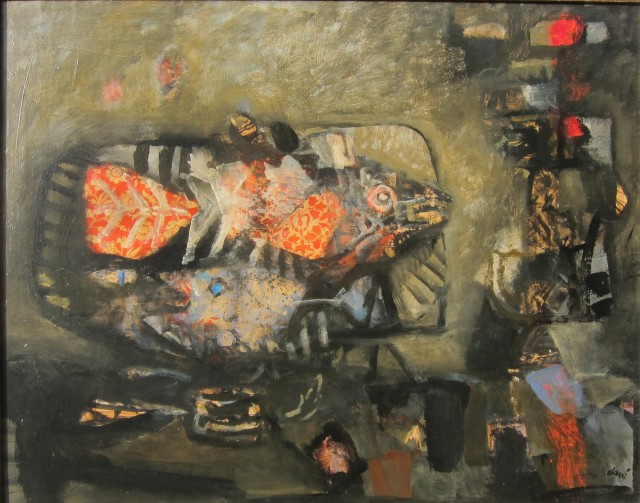Antoni Clavé
(1913 – 2005)
Antoni Clavé was one of Spain’s most celebrated artists and known as a master painter, printmaker, sculptor, stage and costume designer. He was nominated for two Academy Awards (Best Art Direction and Best Costume Design) for his work on the 1952 film ‘Hans Christian Andersen’.
In his early works Clavé used an almost baroque, ornamental style, developing into a purer, more minimal aesthetic in the fifties and sixties. In his later years, his work is completely abstract, using line rather than solid forms to explore the boundaries of shading, texture and color. He was accepted as a trainee into the School of Fine Arts, Barcelona at the age of thirteen, but in the 1930’s moved to Paris where he developed his own painting style in landscapes and portraiture, largely influenced by the French Impressionists and Post-Impressionists, including Bonnard, Vuillard and Roualt. He confessed later that ‘In 1942 I even painted a portrait of my mother that was just a pale imitation of Vuillard’. Clavé’s most acclaimed works are those of lyrical abstraction and in works, such as the ‘Fish’, where he creates collages from paint with a variety of other materials, such as wallpaper, wood and metal.
Initially Clavé's exhibitions were not successful and he was unable to sell a single drawing. But following a commission by the Opéra de Paris to create the scenery and costumes for the triumphant 1962 production of The Marriage of Figaro at the Festival d'Aix-en-Provence, Clavé's work began to achieve success. As a close friend of fellow Catalan Pablo Picasso, Clavé was also able to develop his serious painting. It is claimed that on D-Day in 1944, Clavé and a group of Catalan exiles were in Picasso's studio talking about art when Clavé caught the Picasso’s attention. ‘What's the matter?’ he asked Clavé. ‘Is the paint not flowing well just now?’ And Clavé gloomily replied: ‘No, it's not going well at all’. Picasso responded, ‘Do you think that only happens to you? There are days when I have the same problems as you!’
His theatrical designs have appeared on stages around the world, as well as in numerous films. His works include sets for opera, theatre, and ballet, most notably for Roland Pettit's ballet company.
This work was exhibited at Sala Caspar Gallery, Barcelona, Spain in 1956 and The American Federation of Arts exhibition: Modern Spanish Painting: Six Catalonian Artists from September 1964 – September 1965.
His work is displayed in the Fine Arts Museum of San Francisco, Museo Patio Herreriano de Valladolid, Spain, Tate Gallery, London, Museo de Bellas artes de Bilbao, Museum of Modern Art, Paris, Museo Nacional de Arte Reina Sofia, Madrid and The British Museum, London.
